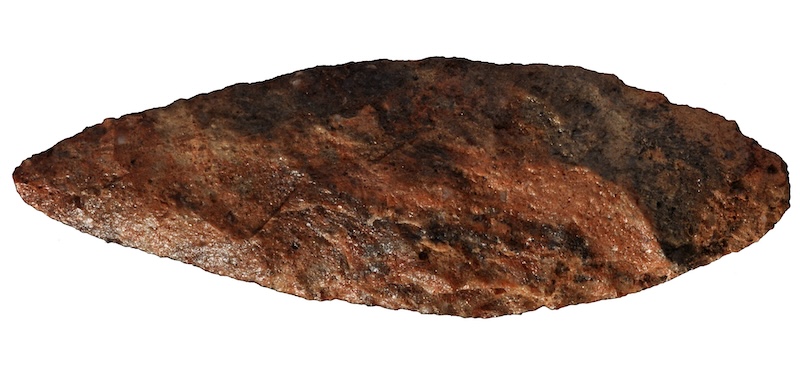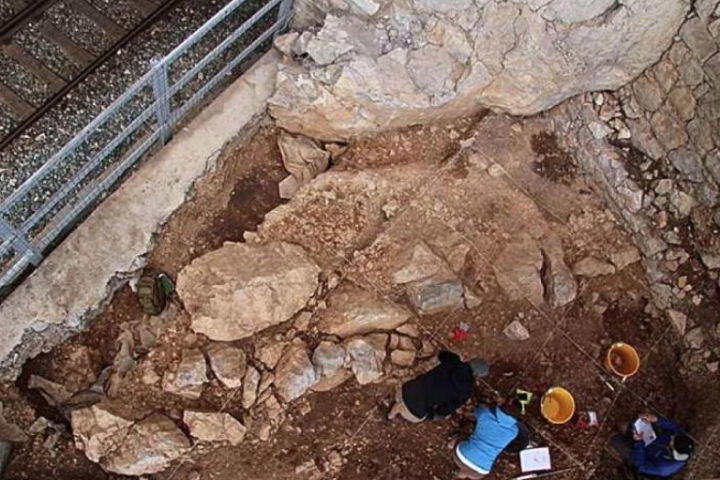Researchers used a specially developed model to test the force required to break off pieces of various rocks used to make sharp-edged tools in the Diepkloof Rock Shelter, about 150 kilometers north of Cape Town.
For the longest period of human history, stone was the most important raw material for making tools. “Stones were flaked to make tools such as knives and scrapers,” says Schmidt.
The Stone Age began around 2.6 million years ago and, depending on the region, only ended around 2,000 BC. The first step in tool production was the collection of specific stones. Researchers first examined the question of how early humans began to carefully select their raw materials.
A model for measuring fracture force
The research team carried out their work at Diepkloof Rockshelter, one of the most important Middle Stone Age sites in the Western Cape province of South Africa. It is known for containing some of the earliest evidence of the use of symbols by humans: ostrich eggshells, about 60,000 years old, decorated with patterns and used as water containers.
“We investigated the rocks from which the tools and spearheads found here were made, including quartzite, silcretite and a rock called hornfels (hornstone). We took pieces of the same rock from the environment and analyzed its mechanical properties.”
The research team has developed a physical model that can be used to calculate the relative force required to produce a chip from a given rock or to break it.

“Our calculation is based on standard measurements known from materials science. What we propose is a new way of interpreting such measurements in terms of toolstone quality.”
“Our comparisons show that hunter-gatherers at Diepkloof selected rocks with the best combination of features for a particular tool form.”
An example is the Still Bay Bits, which are elaborately worked fine points that are shaped on both sides. They were made of a material that requires relatively little force during tool manufacture, but breaks only under relatively high forces when formed into points.
This is due to the different volumes in which the fracture phenomenon takes place. During production, relatively small volumes of fractures occur near the edge of the part. When used as a finished insert, the resulting impact force is distributed over the entire volume of the point.
The study shows that as early as the Middle Stone Age, people in Africa were aware of various material properties and therefore purposefully selected certain rock types.
“Such findings help us understand the processes that took place among our ancestors on the road to modernity. They show that these people were engineers who used their extensive knowledge of available resources in a targeted way.”
Universitaet Tübingen. February 27, 2024.
Patrick Schmidt et al. 2024. The driving force behind tool-stone selection in the African Middle Stone Age. Proceedings of the National Academy of Sciences.





